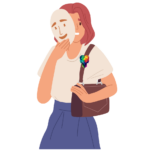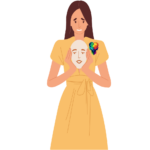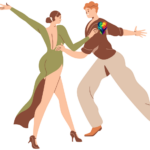Do you have AuADHD? You’re not alone if you’ve always felt a little “off script”—like the world was moving at a rhythm that didn’t match yours, making it challenging to lead an everyday life.
For many adults, the journey toward understanding themselves begins with exhaustion, being overwhelmed, or the quiet ache of never fitting in; however, not everyone experiences it the same way. Some find clarity in a diagnosis of ADHD. Understanding one’s symptoms and seeking help is crucial in the journey towards an accurate ADHD diagnosis. Others in autism. But for a growing number of people, it’s not either-or. It’s both.
AuADHD—the blend of Autism and ADHD—is a uniquely complex neurotype that often goes unseen, especially in adults who’ve spent most of their years masking, adapting, and doing their best to survive a world not designed for them.
This blog post is a window into that lived experience—and a reminder that your brain isn’t necessarily broken; it’s just brilliantly different.
Key Takeaways
- AuADHD Isn’t Just a Combo—It’s a Distinct Experience. Living with both autism and ADHD creates a unique nervous system profile. You may crave structure but resist routine, feel everything and nothing at once, or oscillate between hyperfocus and complete shutdown. This paradox isn’t a flaw—it’s part of how your brain navigates the world.
- Many Adults Go Undiagnosed for Decades. Traditional diagnostic models often miss AuADHD, especially in women, nonbinary folks, and AFAB (assigned female at birth) individuals. Masking and adapting become survival tools. Diagnosis can bring deep relief later in life, helping people reframe years of confusion and finally name what they’ve always felt.
- Support Is Not About Fixing—It’s About Understanding. You don’t need to work harder. You need support that honors your wiring—like nervous-system-safe therapy, executive functioning coaching, and spaces where your lived experience is seen, not pathologized. An ADHD coach, who has experienced ADHD themselves, can help you manage the condition through techniques and strategies. Healing begins with being understood. For many adults, the moment of discovering they’re neurodivergent doesn’t come in early childhood—it comes later, often after years (or decades) of wondering why life felt just a bit harder, messier, or more confusing than it seemed to be for others.
Understanding AuADHD
Adult Attention Deficit Hyperactivity Disorder (AuADHD) is a mental health disorder that affects millions of adults worldwide. It’s characterized by a unique blend of symptoms from both autism and ADHD, making it a complex condition to navigate. People with AuADHD often struggle with paying attention, managing hyperactivity, and controlling impulsivity. These challenges are not just about being “disorganized” or “lazy”—they stem from a legitimate mental health condition that requires proper diagnosis and treatment. Understanding AuADHD is the first step towards seeking support and living a more fulfilling life.
Wait… What Is Attention Deficit Hyperactivity Disorder (AuADHD)?
Attention Deficit Hyperactivity Disorder (AuADHD) is a neurodevelopmental disorder that affects both children in school and adults. According to the Diagnostic and Statistical Manual (DSM-5), AuADHD is characterized by a persistent pattern of inattention and/or hyperactivity-impulsivity that interferes with daily functioning or relationships. The symptoms can vary widely from person to person, but common signs include difficulty paying attention, impulsivity, and restlessness. To have AuADHD means navigating a world where your brain’s wiring doesn’t always align with societal expectations, but understanding this condition can help you find strategies to thrive.
ADHD Symptoms and Challenges
Adults with AuADHD often experience a range of symptoms that can significantly impact their daily lives. These symptoms include:
- Difficulty paying attention: Focusing on tasks, following instructions, or completing projects can be a daily challenge.
- Impulsivity: Acting on impulse, interrupting others, or having trouble controlling emotions are everyday experiences.
- Restlessness: Feeling fidgety or having trouble sitting still can make it hard to relax or stay focused.
- Disorganization: Managing time, staying organized, and self-regulating can be challenging.
- Emotional challenges: Mood swings, anxiety, and depression often accompany AuADHD, adding to the complexity of the condition.
These symptoms can lead to difficulties in various areas of life, including work, school, relationships, and overall well-being. Recognizing these challenges is crucial for seeking appropriate support and finding effective coping strategies.
What Are AuADHD Symptoms?
AuADHD is shorthand for people who are both autistic and have ADHD.
It might look like this:
- Hyperfocus… until total shutdown.
- Sensory sensitivity and sensory seeking.
- Needing structure but resisting routine.
- Deep empathy and connection, but missing cues in conversation.
- Craving connection but needing solitude to function.
These paradoxes are often a result of the complex interplay of ADHD symptoms and autistic traits.
It’s living an everyday life in paradox. And that paradox can be confusing—not only for you but everyone around you.
Why Undiagnosed AuADHD Gets Missed
Most diagnostic systems weren’t built to recognize this blend. Many professionals were trained to look for either autism or ADHD, and often through a narrow lens—one shaped by male, childhood presentations.
Many individuals live with undiagnosed ADHD and undiagnosed AuADHD for years, adapting and masking their symptoms to fit societal expectations.
If you’re a late-diagnosed woman, nonbinary woman, child, or AFAB adult, there’s a good chance you spent a lifetime adapting, blending, and “masking” to fit in. You learned to survive, but at a cost: exhaustion, burnout, and sometimes, the quiet grief of wondering who you might have been if someone had seen you sooner.
Getting an AuADHD Diagnosis
Getting diagnosed with Adult Attention Deficit Hyperactivity Disorder (AuADHD) can be a life-changing experience. For many, it’s the moment when years of confusion and self-doubt start to make sense. The diagnostic process involves a thorough evaluation of your symptoms, medical history, and overall mental health, leading to an accurate ADHD diagnosis. A healthcare professional will assess your symptoms and rule out other conditions that may mimic AuADHD. I happen to be a therapist who assesses for AuADHD in California.
The Diagnostic and Statistical Manual of Mental Disorders, Fifth Edition Text-Revision (DSM-5 TR), is the standard diagnostic tool for AuADHD. This comprehensive evaluation can provide immense relief and a sense of understanding, helping you to see your struggles in a new light. It’s essential to seek support from a qualified healthcare professional to ensure an accurate diagnosis and effective treatment plan; I have extensive experience in AuADHD assessments. Understanding your mental health is the first step towards a more fulfilling life.
How AuADHD Really Feels (From the Inside Out)
Here’s how many of my clients describe AuADHD:
- “I feel everything… and nothing… all at once.”
- “My brain won’t stop but also won’t start.”
- “I’m either totally ON or OFF. There’s no middle.”
- “I know I’m smart. So why do the ‘easy’ things feel so hard?”
You might:
- Be deeply intuitive, yet miss basic instructions.
- Be incredibly creative yet overwhelmed by planning.
- Be socially aware but drained by interaction.
And through it all, you might carry shame that says: “If I just tried harder…”
But here’s the truth: You don’t need to try harder. You need support that’s finally designed with your wiring in mind.
The Emotional Toll of AuADHD
Living with AuADHD can take a significant emotional toll. The constant struggle with symptoms often leads to feelings of shame, guilt, and inadequacy. Many adults with AuADHD grapple with low self-esteem, anxiety, and depression, exacerbated by the stigma surrounding the condition. This stigma can lead to feelings of isolation and loneliness, making it even harder to seek help.
It’s essential to reach out to mental health professionals, support groups, and loved ones to manage these emotional challenges and find the proper support. By seeking support, you can improve your overall well-being and navigate the complexities of AuADHD more effectively. Remember, you are not alone, and there is strength in seeking support and understanding.
The Impact of AuADHD on Daily Life
People with ADHD, especially those diagnosed with AuADHD, can significantly impact their daily lives, affecting everything from relationships to work, school, and overall well-being. Symptoms like difficulty paying attention and impulsivity can lead to missed deadlines, forgotten appointments, and strained relationships. You might struggle with time management, organization, and self-regulation, among other adults, which can lead to frustration and feeling overwhelmed.
These challenges can also take a toll on your mental health, increasing the risk of anxiety, depression, and other mental health conditions. However, a diagnosis of AuADHD can be a turning point. It can help you understand your struggles and find the support you need to improve your daily functioning, focus, and overall quality of life. Remember, you’re not alone in this journey, and with the proper support, you can navigate the complexities of AuADHD more effectively; I can surely help and support you!
Living *With* Your Brain, Not Against It: Tips from an AuADHD Therapist
Support for AuADHD isn’t about fixing you but understanding and applying different strategies that work for your unique needs. That might look like:
- Nervous-system-safe therapy.
- Therapy or Coaching that honors your energy rhythms.
- Assessments that validate your lived experience.
- Language that finally makes sense of your story.
Working with me as your AuADHD therapist or coach can provide personalized strategies and support to help you navigate daily challenges.
It’s about honoring your brilliance and struggle—without minimizing either. This includes understanding and managing rejection-sensitive fear and dysphoria, which can significantly impact interpersonal relationships and emotional well-being.
AuADHD Medications and Treatment Options
Treatment for AuADHD typically involves a combination of ADHD medications and behavioral therapies. Medications, such as stimulants and non-stimulants, can help alleviate symptoms like inattention and impulsivity, making it easier to manage daily tasks. Behavioral therapies, such as cognitive-behavioral therapy (CBT) and ADHD, specifically Executive Functioning coaching, can help you develop coping strategies and improve your daily functioning.
In addition to these treatments, lifestyle changes like regular exercise, healthy eating, and stress management can also play a crucial role in alleviating symptoms. Working with your doctor or a healthcare professional to develop a personalized treatment plan that addresses your individual needs and goals is essential. Remember, managing AuADHD is a holistic process involving medical and lifestyle interventions.
Mental Health and AuADHD
AuADHD is often comorbid with other mental health conditions, such as anxiety, depression, and bipolar disorder. The chronic stress and frustration associated with AuADHD can increase the risk of a child developing these mental health conditions. Therefore, a comprehensive treatment plan should address both AuADHD and any co-occurring mental health conditions.
Mental health professionals, such as psychologists and psychiatrists, play a crucial role in diagnosing and treating AuADHD and its comorbid conditions. They can help you navigate the complexities of your mental health and develop strategies to manage your symptoms effectively. Remember, addressing your mental health holistically is key to living a balanced and fulfilling life.
Overcoming Stigma and Shame
Living with AuADHD often comes with a significant amount of stigma, leading to feelings of shame and embarrassment. For example, you might feel flawed or inadequate, contributing to low self-esteem and self-doubt. However, it’s important to remember and realize that AuADHD is a neurodevelopmental condition, not a personal failure.
Education and awareness can help reduce stigma and promote a better understanding of AuADHD; for example, sharing personal stories can be enlightening. Seeking support from healthcare professionals, support groups, and online communities can help you feel less isolated and more empowered. By connecting with others who share similar experiences, you can build a supportive network that enables you to navigate the challenges of AuADHD. Remember, you are not alone, and there is strength in seeking support and understanding.
You’re Not Alone
If this sounds like you, I want you to know: You’re not too much. You’re not making it up. You’re not alone anymore.
Connecting with others with AuADHD can provide valuable insights and a sense of belonging.
You may have masked your way through your whole life now. You may have been dismissed, misdiagnosed, or misunderstood. But the path forward doesn’t have to be about continuing that story.
Frequently Asked Questions:
What is AuADHD?
AuADHD stands for Autism and Attention Deficit Hyperactivity Disorder. It is a neurodevelopmental disorder that affects both social interaction and attention span.
Is it common to have both autism and ADHD?
Yes, it is possible to have both autism and ADHD. Research has shown that approximately 70% of individuals with autism also have symptoms of ADHD.
How can connecting with others who have AuADHD help me?
A: Connecting with others who share similar experiences can provide a sense of understanding, support, and validation. It can also offer valuable insights on navigating the challenges of a person living with AuADHD.
Will seeking support make me feel less alone?
Absolutely. Connecting with others who have AuADHD can help you feel less isolated and provide a sense of community. It can also offer opportunities for learning and growth through shared experiences.









